XFX GeForce 6800 Ultra Review
XFX GeForce 6800 Ultra
XFX has got the first retail nVidia GeForce 6800 Ultra onto the market and we've put it through its paces.
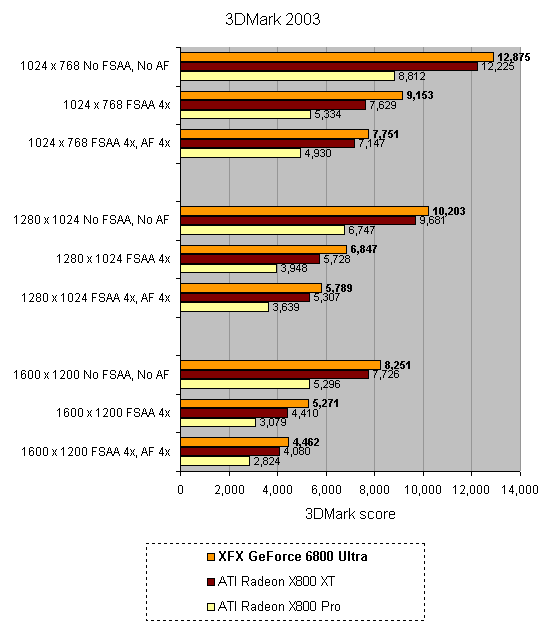
Verdict
Key Specifications
- Review Price: £397.00
It’s finally here, the first retail GeForce 6800 Ultra card and it hasn’t come from one of the usual board partner suspects, instead it’s from TrustedReviews newcomer XFX. That said, XFX is not a new company since it’s backed by the Pine group which has been around for a good few years, but never really made a big noise. The card itself is based entirely on the nVidia reference design and the only change is a different fan plate with an XFX logo on it.
The card that XFX sent in for review was clocked higher than the reference board we looked at – the GPU is clocked at 450MHz and the memory at 1100MHz, which is about as fast as you’re likely to find any 6800 Ultra card. Trying to push the GPU a mere 10MHz further made it fall over in the benchmarks; although it was still possible to push the memory a bit further than its default speed. To verify the speed of the XFX 6800 Ultra I contacted XFX and the reply was that all cards will be clocked at a minimum of 425MHz, but the 450MHz core speed can’t be guaranteed. It’s therefore worth checking before you buy.
With the clock speed in mind, our benchmark scores may be a little high due to the fact that our card was 25MHz faster than the retail cards could be. XFX is aiming to have its cards running at 450MHz at a later date when the yield of the 6800 Ultra chipset has improved. This is little comfort to anyone looking at buying a card now though, but nVidia never promised to have the cards running faster than 400MHz so XFX has at least managed to improve upon that.
The XFX packaging is easily recognised by its unusual X shape. Apart from the card itself you get a DVI adapter, a ViVo dongle that is a Y-splitter that separates the video in and video out signals, two S-Video cables and a copies of Commandos 3, X2 – The threat and Moto GT 2 – this is a reasonable games bundle, but none of the titles will really show the card off to its best light. It is however good to see that both Commandos 3 and X2 – The threat come with paper manuals, which is unusual when it comes to bundled software.
The ViVo dongles gives away the built in video editing capabilities, but sadly we didn’t have time to have a look at all the new features nVidia claims that the 6800 series is capable of, but we will bring you some more information on this in a later review.
As with the reference card that we reviewed here the XFX 6800 Ultra is a 16 pipeline part – this is the only 16 pipeline card you can currently purchase, at least until ATI finally gets its X800 XT into the shops. Neither company managed to keep their promises in terms of retail release dates, but at least nVidia got its high-end part out first and hopefully we’ll see the lower-end version in the next month or two.
But let’s put flashy packaging and bundled games to one side and look at how well the final GeForce 6800 Ultra stands up against ATI’s Radeon X800 cards. We tested all the cards in the Evesham Evolution Extreme PC, as it was the fastest PC we could get our hands on at the time. With a 3.4GHz Pentium 4 Extreme Edition and 1GB of RAM on an Intel 875P board you’d be hard pushed to find a faster platform to test a high-end gaming graphics card on.
Due to time restraints we didn’t quite manage to get a full suite of benchmarks done on the XFX 6800 Ultra and you’ll notice that 3DMark 2001 and Far Cry are sadly missing. But let’s take a close look at the numbers we do have.
First up is 3DMark 03, in which the 6800 Ultra manages to edge itself in front of the Radeon X800 XT in all of the tests, but not by much and with the retail cards being 25MHz slower, this gap will be even smaller. The 6800 Ultra continued its lead in Aquamark until it reached 1,280 x 1,024 with 4x FSAA and 4x AF as this is the point where the ATI X800 XT takes the lead. The Radeon X800 Pro is also very close here at the higher resolutions and as Aquamark is a very demanding 3D benchmark this gives us some idea of how these cards will perform in real games.
Moving away from the synthetic benchmarks and on to the real game benchmarks we’ll start with X2 – The threat, which is yet again a very demanding test, and the 6800 Ultra is the first card to break the 100fps barrier here. The ATI card does however catch up at higher resolutions and the X800 XT even manages to overtake the 6800 Ultra a couple of times.
Moving swiftly on to Tomb Raider: Angel of Darkness the 6800 Ultra and X800 XT are head to head at 1,024 x 768, but this is the first benchmark where we see a clear lead by ATI at higher resolutions, although it is worth remembering that the XFX 6800 Ultra card was tested with pre-release drivers while the ATI cards where tested with the Catalyst 4.5 drivers.
The XFX takes the lead again in Halo, not by a huge margin, but enough to make it a clear leader once again. Overall the 6800 Ultra is just that little bit faster than the ATI cards, but the question is whether this lead is enough to convince current ATI users to change back to nVidia. For all nVidia fans this is great news and with the inclusion of Pixel Shader 3.0 (a feature missing from the ATI X800 chipset) there are really only a couple of minor drawbacks when going for a 6800 Ultra.
The first one is the size of the card, as it takes up two slots, which means you loose the first PCI slot on your motherboard – this might not be a major issue, but ATI has nonetheless managed to produce a single slot solution using its high-end chipset.
The second issue is the power requirement, with the 6800 Ultra needing a fairly hefty PSU in the region of 460W plus if you intend to even try to overclock the card. You can run the card at 400MHz with only one of the power connectors attached, but anything beyond this requires two power connectors.
That said, the power hungry nature of the 6800 Ultra might not be as terrible a problem as it first seems since you would need a super charged PC to make the most of this card anyway – even the mighty 3.4GHz Pentium 4 Extreme Edition seemed to be limiting the power of this graphics card. And to be able to afford one of these cards you need to have no less than £397.15 of spare cash knocking about, so you’ll probably also be able to afford a decent power supply.
Taking the power requirements and the size of the card into account, it’s clear that the 6800 Ultra is not suited to small form factor systems, and this could be good news for ATI. That said, nVidia has a 16 pipeline, lower power, single slot solution just around the corner called the 6800 GT which will address this issue (look out for a review of this card soon).
It’s impressive to see a fairly unknown company such as XFX getting the first nVidia GEForce 6800 Ultra onto the market. The overall package is good, but the expected high price puts this card out of reach for most of us, but for those lucky few that have the cash spare, there is little doubt that this is the fastest card money can buy – for the moment at least.
”’Verdict”’
XFX has impressed by being the first manufacturer to get the GeForce 6800 Ultra out into the channel and although it is in scarce supply and the price is high, it is a great gaming solution that has everything you would expect from a cutting edge graphics card.

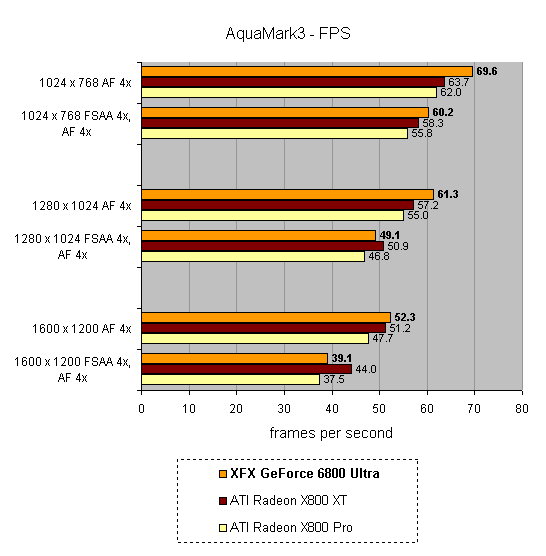
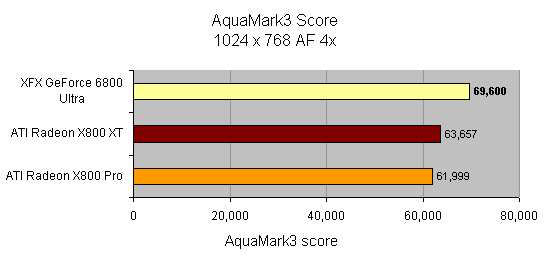
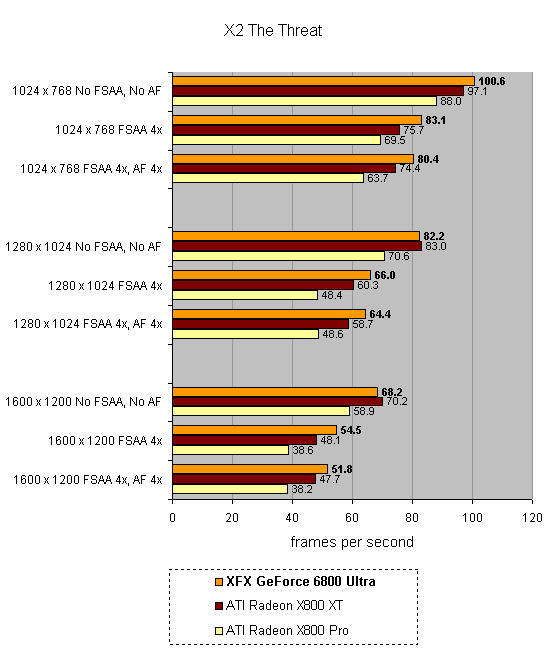
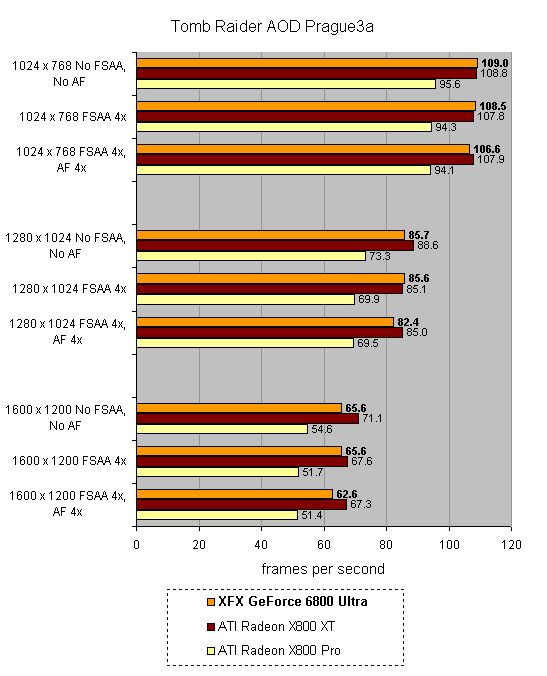
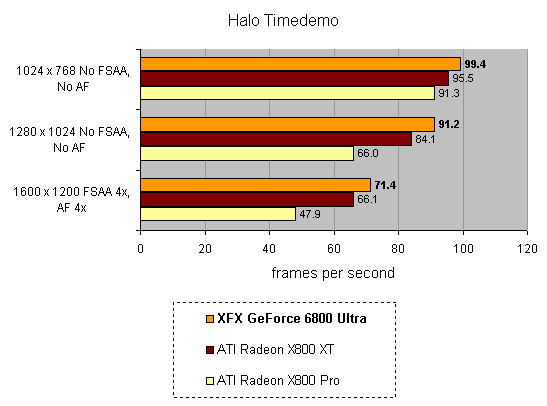
Trusted Score
Score in detail
-
Value 7
-
Features 9
-
Performance 9

